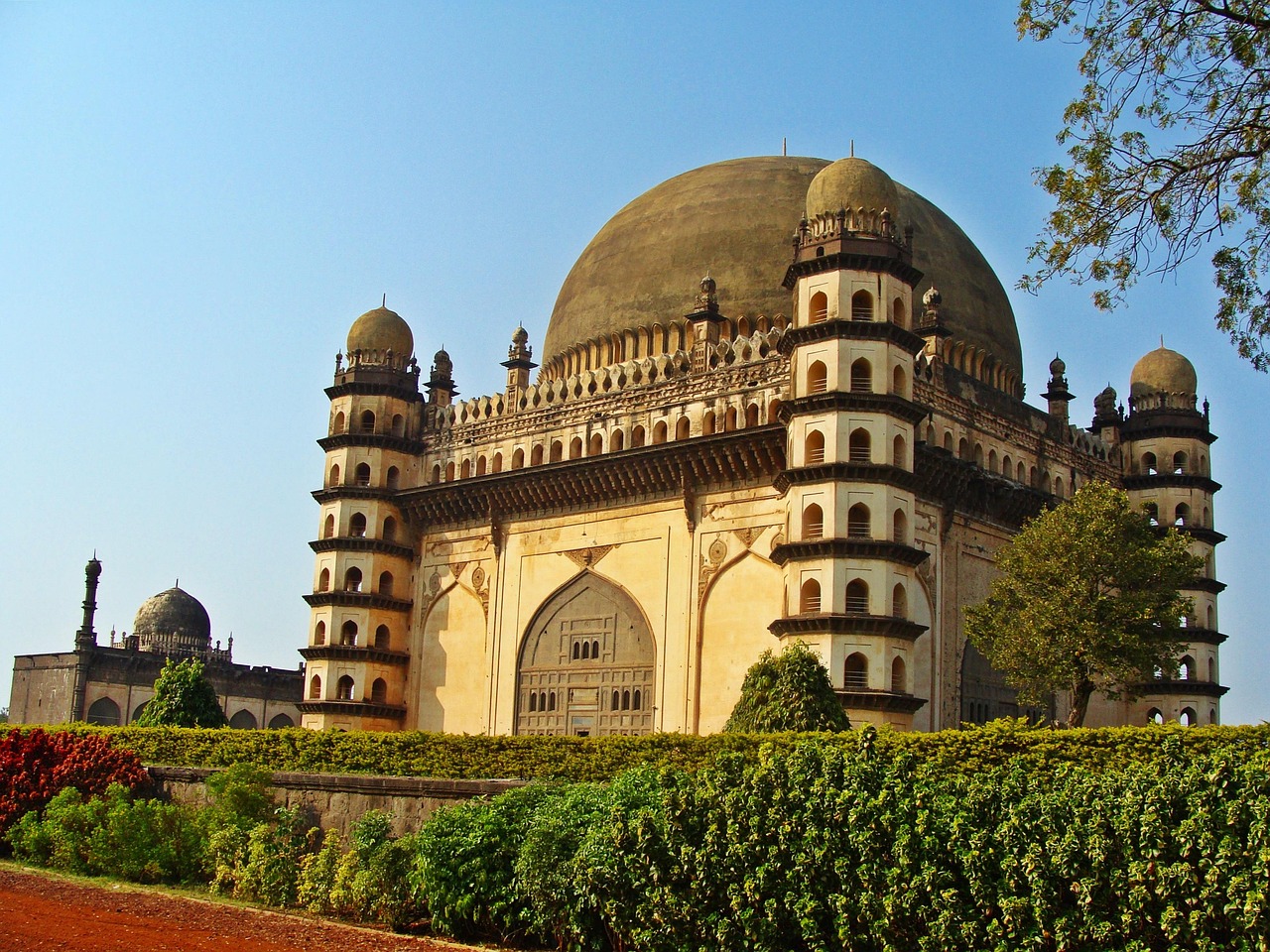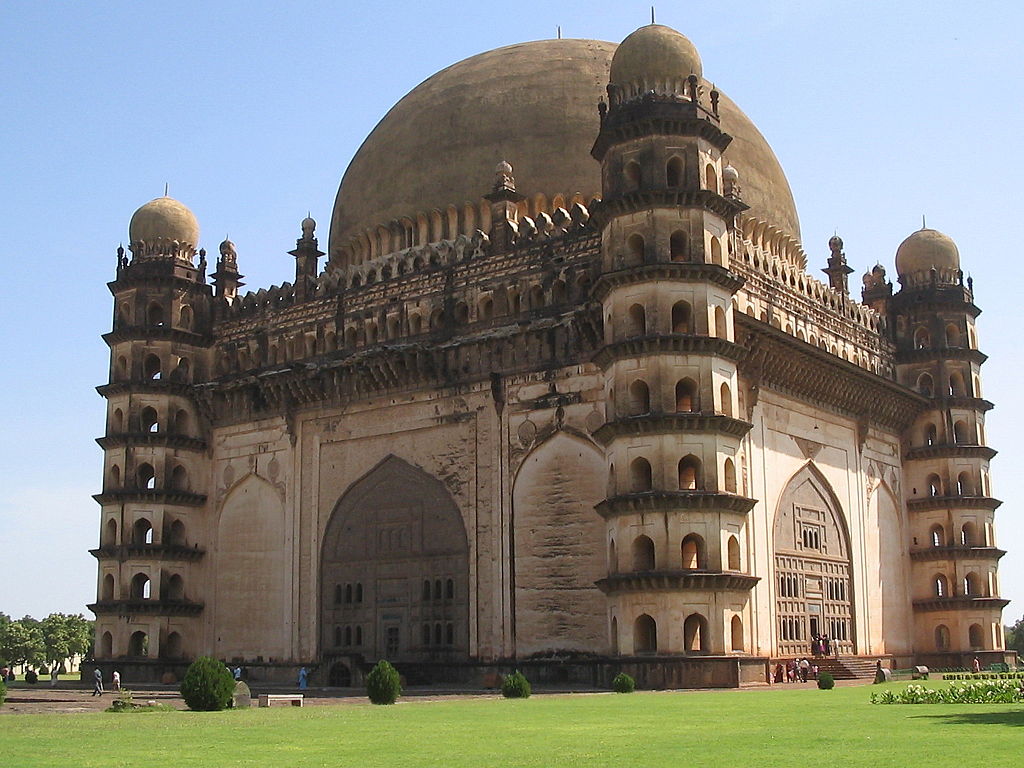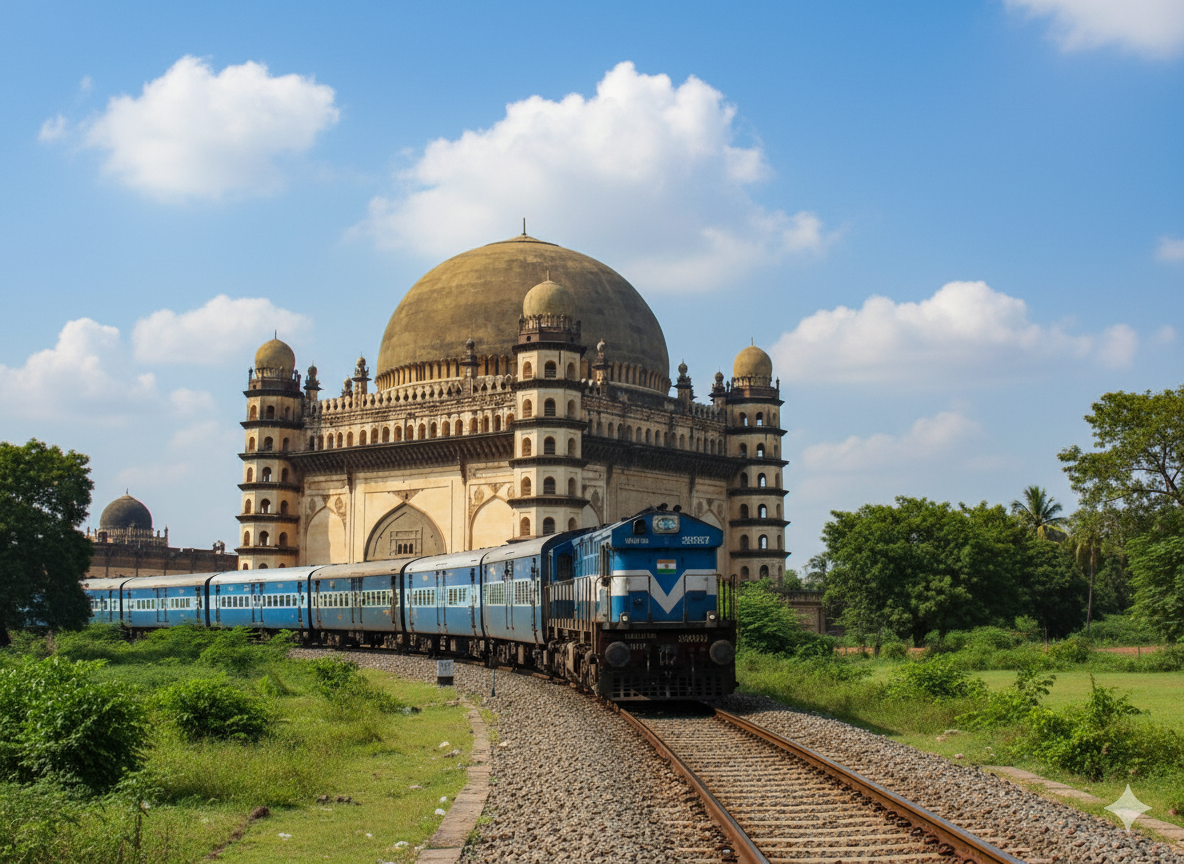Glimpse of Vijayapura (Formerly Bijapur)


Photo: Wikimedia Commons, CC BY-SA 3.0
Introduction
Vijayapura, formerly known as Bijapur until 2014, stands as one of North Karnataka’s most historically significant cities. Located in the northern part of Karnataka state, this ancient city served as the capital of the Adil Shahi dynasty (1490-1686 CE) and showcases some of the finest examples of Indo-Islamic architecture in India.
Historical Overview
The city’s history can be traced back to ancient times, but it rose to prominence under the Adil Shahi sultans who made it their capital. The dynasty’s architectural legacy includes the magnificent Gol Gumbaz, Ibrahim Rauza, and numerous mosques, palaces, and fortifications that continue to attract historians, architects, and tourists from around the world.

Photo: Wikimedia Commons, CC BY-SA 4.0
Key Historical Periods
| Period | Dynasty/Ruler | Significance |
| 10th-12th Century | Chalukyas | Early fortification and settlement |
| 1490-1686 | Adil Shahi Dynasty | Golden age; major architectural development |
| 1686-1947 | Mughal/British Rule | Administrative changes, colonial influence |
| 1947-Present | Independent India | Cultural preservation, tourism development |

Photo: Wikimedia Commons, CC BY-SA 2.0
Major Monuments and Attractions
1. Gol Gumbaz
The Gol Gumbaz is Vijayapura’s most famous landmark and architectural marvel. Built in 1656 as the mausoleum of Mohammed Adil Shah, it features the second-largest dome in the world (after St. Peter’s Basilica in Rome) and is renowned for its unique whispering gallery.
Key Features:
- Dome diameter: 44 meters (144 feet)
- Height: 51 meters (167 feet)
- Whispering gallery with remarkable acoustics
- Four seven-story octagonal towers at corners
2. Ibrahim Rauza
Often called the “Taj Mahal of the Deccan,” the Ibrahim Rauza is considered one of the most elegant Islamic monuments in India. Built in 1627, this complex includes a mosque and tomb surrounded by beautiful gardens.
3. Jama Masjid
Built by Ali Adil Shah I in 1576, the Jama Masjid is one of the finest mosques in India. Its spacious courtyard can accommodate thousands of worshippers, and its elegant arches and domes exemplify Adil Shahi architecture.
4. Malik-e-Maidan (Monarch of the Plains)
This massive cannon, cast in 1549, is one of the largest medieval cannons in the world. Weighing approximately 55 tons and measuring over 4 meters in length, it stands as a testament to the military prowess of the Adil Shahi dynasty.
Cultural Significance
Vijayapura represents a unique blend of Hindu and Islamic cultures. The city’s architecture reflects Persian, Turkish, and indigenous Indian influences, creating a distinctive Deccani style. The city continues to be an important center for Islamic learning and culture in South India.
Festivals and Events
- Urs Festival: Annual celebration at various Sufi shrines
- Vijayapura Utsav: Cultural festival showcasing local arts and heritage
- Traditional fairs: Regular religious and cultural gatherings
Visitor Information
How to Reach
| Mode of Transport | Details |
| By Air | Nearest airports: Belgaum (205 km), Hyderabad (375 km), Vijayapura Green Field Airport (Coming Soon) |
| By Rail | Vijayapura Junction well-connected to major cities |
| By Road | Regular bus services from Bangalore, Pune, Hyderabad |
Best Time to Visit
October to March is the ideal time to visit Vijayapura, when the weather is pleasant and suitable for exploring the outdoor monuments.
Accommodation
The city offers a range of accommodation options from budget hotels to mid-range properties. Karnataka Tourism Development Corporation (KTDC) operates Hotel Mayura Adil Shahi near Gol Gumbaz.
Conservation Efforts
The Archaeological Survey of India (ASI) maintains most of the major monuments in Vijayapura. Recent initiatives have focused on:
- Structural conservation and restoration
- Installation of visitor facilities and interpretation centers
- Digital documentation and heritage mapping
- Community engagement in heritage conservation
Photo: Santoshsmalagi, Wikimedia Commons (CC BY-SA 3.0)
Conclusion
Vijayapura stands as a living museum of Indo-Islamic architecture and Deccan history. Its magnificent monuments, rich cultural heritage, and historical significance make it an essential destination for anyone interested in Indian history and architecture. As the city continues to preserve its heritage while embracing modernity, it remains a testament to the artistic and architectural achievements of the Adil Shahi dynasty.
Whether you’re a history enthusiast, architecture lover, or curious traveler, Vijayapura offers an unforgettable journey through centuries of cultural synthesis and artistic excellence.
All images used in this article are sourced from Wikimedia Commons and are available under Creative Commons licenses, ensuring proper attribution to the original photographers and compliance with usage terms.



